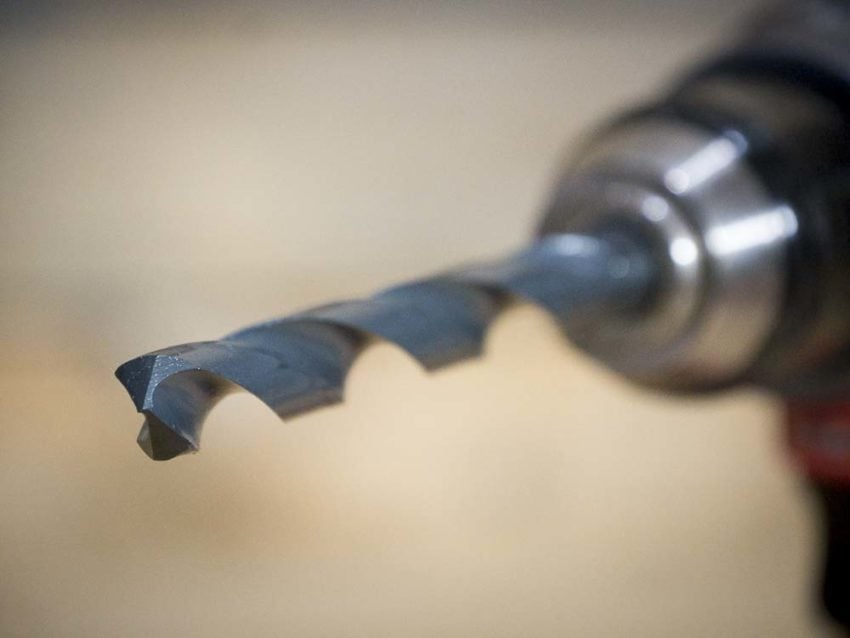Black oxide coatings appear on a variety of products—most commonly on drill bits, folding knives, and other cutting accessories. Just what is black oxide coating? In a nutshell, it coats materials in a chemical conversion as opposed to an electroplating process. According to Electrochemical Products, Inc., you can apply this type of overlay to steel, stainless, aluminum, cast iron, copper, brass, bronze, zinc, and other materials.
Table of Contents
Why Use Black Oxide
First and foremost, black oxide protects against oxidation. Second, it aids in retaining the edge sharpness of products like drill bits and certain tools. It also reduces friction. Lastly, black oxide coatings reduce light reflection. That makes them absolutely perfect (and critical) for many kinds of UV and IR sensors and detectors.
You can find this process and material used across a variety of applications and industries. These include automotive, sensors, photovoltaics—even watchmaking and applications involving the space industry!
Black Oxide Coating in a Nutshell
Black oxide coating (also known as magnetite or Fe3O4) comes in various forms and names. You can call it blackening or black passivating or even gun bluing. Adding a black oxide coating means using a chemical conversion process to form a coating of black iron oxide on the surface of any ferrous metal.
This differs from a powder coat or titanium coating that sits atop the surface of a metal. Rather, the process of creating a black oxide coating results from a chemical reaction between the iron located on the surface of a ferrous metal and a black oxide solution comprised of oxidizing salts.
Rather than simply stopping at the black oxide coating process, manufacturers also tend to continue treating the metals using a variety of methods. This may include additional processes to increase corrosion resistance and abrasion resistance.
Creating the Overlay
As mentioned above, manufacturers create a black oxide coating directly on materials using a chemical conversion rather than by applying it like an electroplating process. A black oxide solution includes salts that act as an oxidizer. That solution reacts with the iron in the steel to create a coating over the surface.
On products like knife blades, manufacturers coat the blade before adding a final edge. This reveals that silver edge on brand new blades. Conversely, a drill bit gets its chemical bath last. You actually see the coating over the cutting edges when brand new. Use that bit or sharpen it with a Drill Doctor, and the natural uncoated edge shows through clearly.
Black Oxide Coating Benefits
The best drill bits use more expensive coatings or materials. Still, black oxide has its uses. Manufacturers choose it as an inexpensive way to improve steel compared to other coatings and blends. The two most popular benefits of this material include corrosion resistance and reduced friction. Both are relatively minor improvements, but it does give the product a bump up over bare steel.

Black oxide coatings also add very little thickness to the steel on which they are applied. For precision accessories like drill bits, adding only 5 to 10 millionths of an inch helps maintain their sharpness.
Black oxide coatings also give products a nice finish for a tactical look. It takes on the sheen of the original steel, so some appear glossy while others have a non-reflective matte finish.
Other Benefits
- Better lubrication between parts
- Anti-galling surface
- Better adhesion for paint and other finishes
- Low effect on conductivity
- No increase in brittleness
- No additional fumes when welding
The Limitations of Coatings
The major limitation of any coating has to do with its characteristics not running through the entire steel blend. Any area of the steel which wears off loses the benefits of the black oxide.
Applying the Black Oxide Coating Using Hot or Cold Processes
When people ask the ‘What is black oxide’ question, we also mention the process. Black oxide can form under hot (285° F) or cold (room temperature or a little higher) processes. Hot processes offer better corrosion and scratch resistance—the only type that automotive and military standards accept.
Cold processes don’t actually produce a true oxide, leaving a softer coating. You can take a coin and scratch off the coating on steels that went through a cold process. For a product like a drill bit, it doesn’t take much use before the coating comes off the areas that contact material if they undergo a cold oxide process.
Post Treatments for Black Oxide Coatings
As oil resists corrosion (rust), manufacturers sometimes use clear wax or even acrylic to further protect black oxide coatings. More frequently, they use oil post-treatments. Done right, you can actually leave a rather thick (relatively speaking) layer of oil film on the part. Special processes exist to do so while leaving the part dry to the touch. Most include either light water-soluble oil or going with acrylic or wax post-treatment.
The next time you pick up a knife or drill bit with a black oxide coating, hopefully, you have some more appreciation for the processes that make these tools and accessories a reality. If you have any additional info, please feel free to leave it in the comments below.




